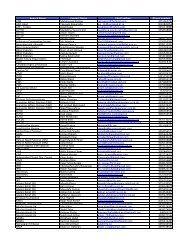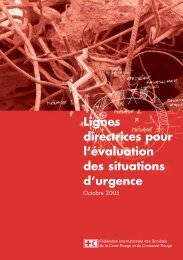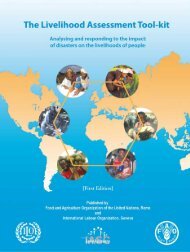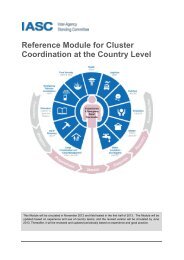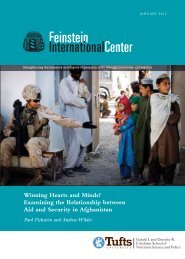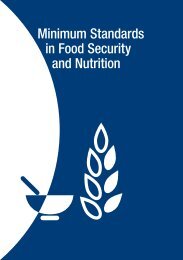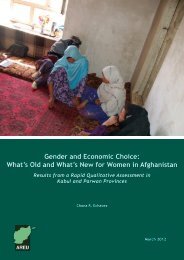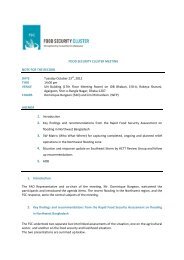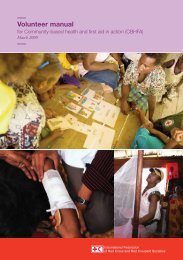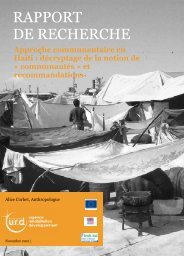4.15 MB - Food Security Clusters
4.15 MB - Food Security Clusters
4.15 MB - Food Security Clusters
- No tags were found...
You also want an ePaper? Increase the reach of your titles
YUMPU automatically turns print PDFs into web optimized ePapers that Google loves.
South Sudan: How a new country can feed its peopleBut the percentage deriving more than 50% oftheir income from natural resources has jumpedfrom 12% in 2006 to 19% in 2011 (Figure 3.10).The proportion is especially high in the poorestand conflict affected states such as Jonglei,Unity and Northern and Western Bahr El Ghazalwhere up to a third of the population isdependent on this method (Table 3.4).The increasing use of these unsustainableincome-generating activities could furtherjeopardize household food security in the longtermby damaging the country’s naturalresources and undermining the sustainablelivelihood system in many areas.In contrast with the increasing use ofunsustainable livelihood practices, external aidas a dominant income source for householdshas fallen by more than half, from 11% in 2006to 5% in 2010 (Figure 3.11). The state of Jongleiremains the main recipient of aid with 15% ofhouseholds deriving (on average) 64% of theirincome from aid and gifts (Table 3.3 and Table3.4). Table 3.5 gives further insight on deliveryof food aid according to NBHS data.Table 3.5 – <strong>Food</strong> aid deliveryReceivedcash/goodsfrom foodaid programsSouthern Sudan 3.8Place ofUrban 4.1residenceRural 3.8Sex of household Male 3.5headFemale 4.5Quintiles of monthlyper capita expenditure1 1.72 3.23 4.24 4.75 4.8Poor Non poor 4.9Poor 2.6Source: NBHS, 2009points out that the better off are more likely toreceive food assistance as compared to thepoorest and most vulnerable.Using a wealth index as defined by the SHHSsurvey, households living in extreme poverty (asdefined by the lowest wealth quintile) can befound in each livelihood group. However, asubstantially higher percentage of extreme poorhouseholds can be found among pastoralistswith 40% identified as extremely poor. Around afifth of agriculturalists and those relying on thesale of natural resources, aid, gifts andremittances and alcohol sales live in extremepoverty (Figure 3.12). In contrast, more thanhalf of those dependent on salaries are in thehighest wealth quintile.In terms of food insecurity, Figure 3.13 showsthat pastoralist have the highest incidence ofpoor food consumption.Targeted programmes to alleviate poverty andsupport sustainable livelihoods may enable thepoorest (e.g. pastoralists, widows, andreturnees) to buy a greater variety and volumeof food.It is clear that poverty reduction is no cure-allfor hunger in a country as complex as SouthSudan, but must go hand-in-hand with, forexample, disaster preparedness, conflictresolution, female education programmes andimprovements in crop yields. These issues willbe further analyzed in the next chapters.The percentage of food aid receiving householdsin South Sudan is almost 4%. 8 The data however,8 WFP’s coverage peaks in June-July during the lean season,so the percentage is likely to be higher as this data wascollected in April-May 2009.24



